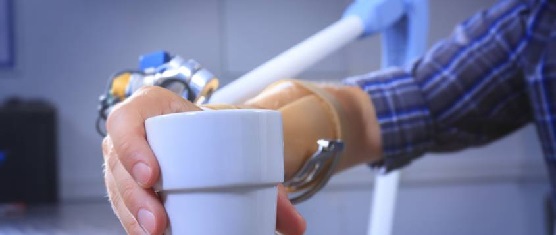Ard J. Westerveld, Bernard J. Aalderink, Wouter Hagedoorn, Martijn Buijze, Alfred C. Schouten, and Herman van der Kooij, University of Twente, Demcon Advanced Mechatronics, Delft University of Technology, The Netherlands
Volume 61, Issue 10, Page:2646-2654

Robotic systems have found their way into rehabilitation practice. Stroke survivors may benefit from robotic assistance for relearning of functional movements. Current assistive devices for the arm are either passive, limited to only two dimensions or very powerful. However, for reach training, weight compensation and a little assistance with limited power is sufficient.
We designed and evaluated a novel three-dimensional robotic manipulator, which is able to support the arm weight and assist functional reaching movements. Key points of the design are passive gravity support, a damper-based drive train, giving an inherently safe system and its compact and lightweight (25 kg) design.
The system is force controlled with a bandwidth of up to 2.3 Hz, which is sufficient for functional arm movements. Maximal assistive forces are 15 N for the up/down and forward/backward directions and 10 N for the left/right direction. Force tracking errors are smaller than 1.5 N for all axes. Furthermore, the device has shown its benefit for increasing reaching distance in a single-case study with a stroke subject.
The newly developed system has the technical ability to assist the arm during movement, which is a prerequisite for successful training of stroke survivors. With its inherent safety, low weight, and compactness, this novel system has the potential for home-based therapeutic training after stroke, which facilitates intensive functional task training and might increase training outcome.
Keywords: biomechatronics, end effectors, patient rehabilitation, rehabilitation robotics, robot control

